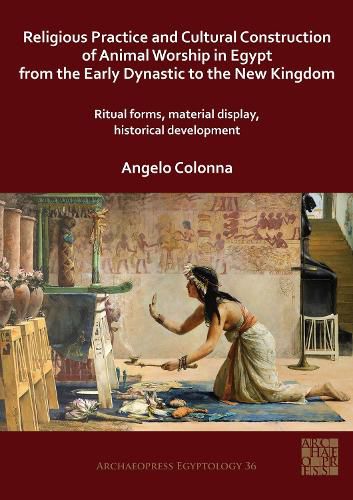Readings Newsletter
Become a Readings Member to make your shopping experience even easier.
Sign in or sign up for free!
You’re not far away from qualifying for FREE standard shipping within Australia
You’ve qualified for FREE standard shipping within Australia
The cart is loading…






Religious Practice and Cultural Construction of Animal Worship in Egypt from the Early Dynastic to the New Kingdom presents an articulated historical interpretation of Egyptian ‘animal worship’ - intended as a segment of religious practice focused on the mobilisation of selected animals within strategically designed ritual contexts - from the Early Dynastic to the New Kingdom, and offers a new understanding of its chronological development through a fresh review of pertinent archaeological and textual data. The goal is twofold: (1) to re-conceptualise the notion of ‘animal worship’ on firm theoretical and material bases, reassessing its heuristic value as a tool for analysis; (2) to demonstrate, accordingly, that ‘animal worship’ did not represent a late degeneration of traditional religion, socially (popular cult) and thematically (animal mummies and burials) restricted, but a complex domain of religious practice with a longer history and a larger variety of configurations than usually assumed.
$9.00 standard shipping within Australia
FREE standard shipping within Australia for orders over $100.00
Express & International shipping calculated at checkout
Religious Practice and Cultural Construction of Animal Worship in Egypt from the Early Dynastic to the New Kingdom presents an articulated historical interpretation of Egyptian ‘animal worship’ - intended as a segment of religious practice focused on the mobilisation of selected animals within strategically designed ritual contexts - from the Early Dynastic to the New Kingdom, and offers a new understanding of its chronological development through a fresh review of pertinent archaeological and textual data. The goal is twofold: (1) to re-conceptualise the notion of ‘animal worship’ on firm theoretical and material bases, reassessing its heuristic value as a tool for analysis; (2) to demonstrate, accordingly, that ‘animal worship’ did not represent a late degeneration of traditional religion, socially (popular cult) and thematically (animal mummies and burials) restricted, but a complex domain of religious practice with a longer history and a larger variety of configurations than usually assumed.